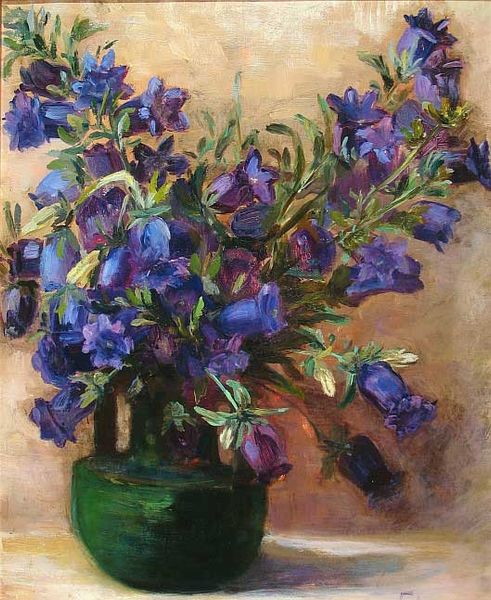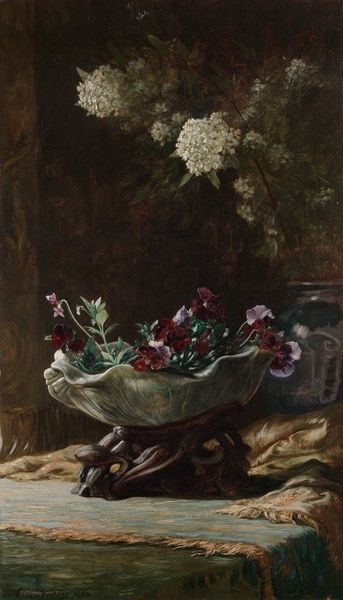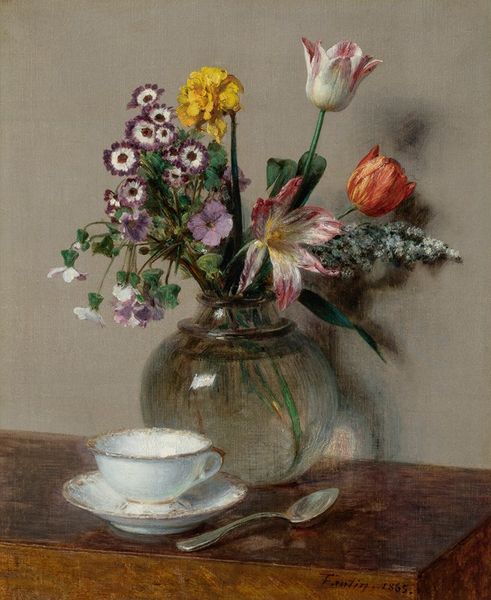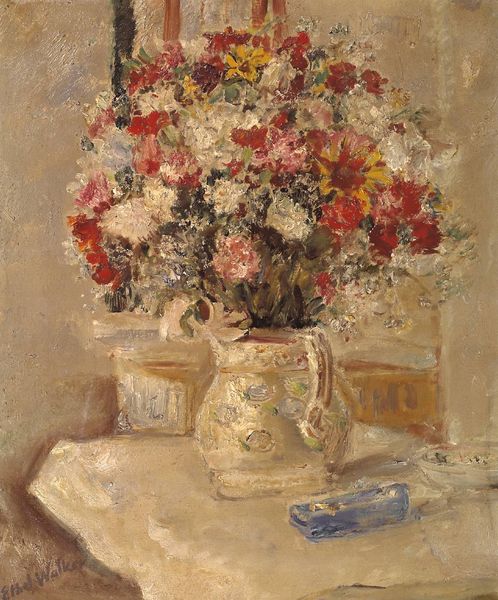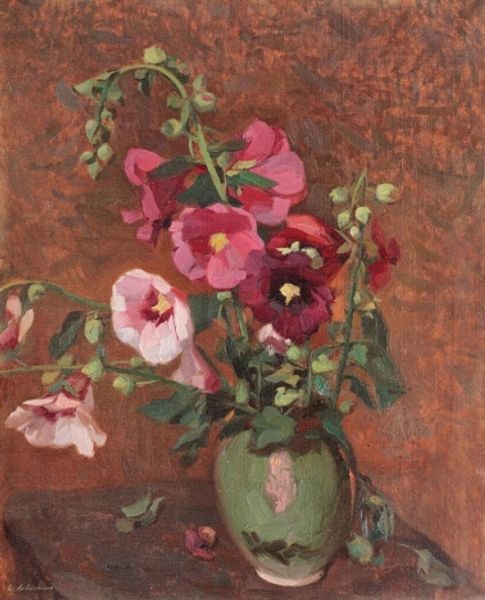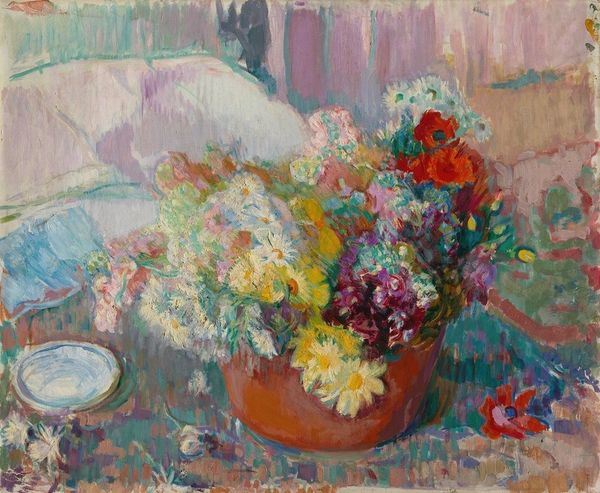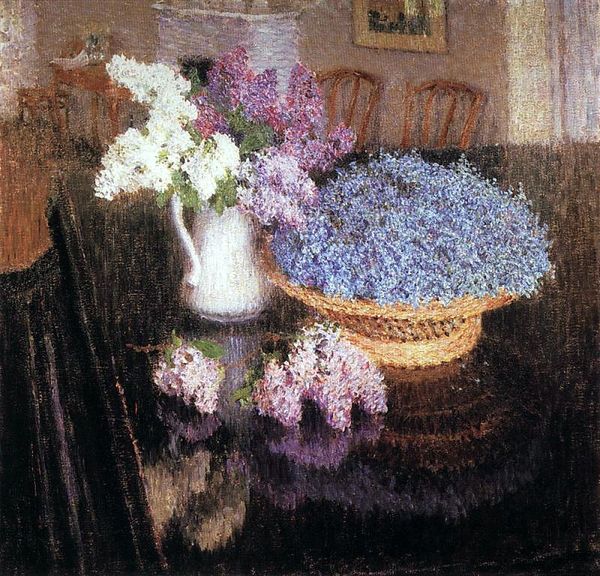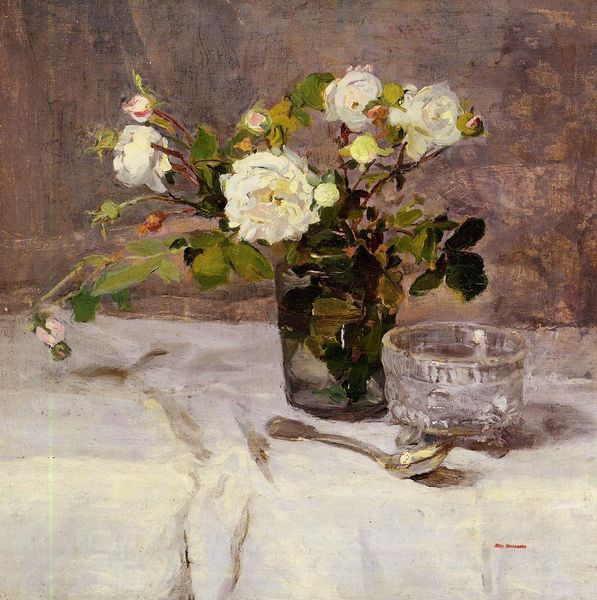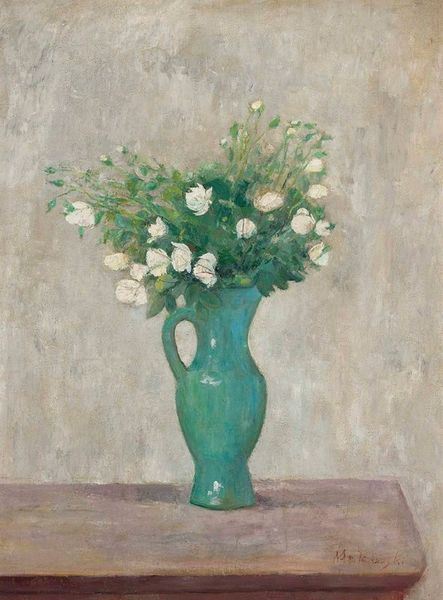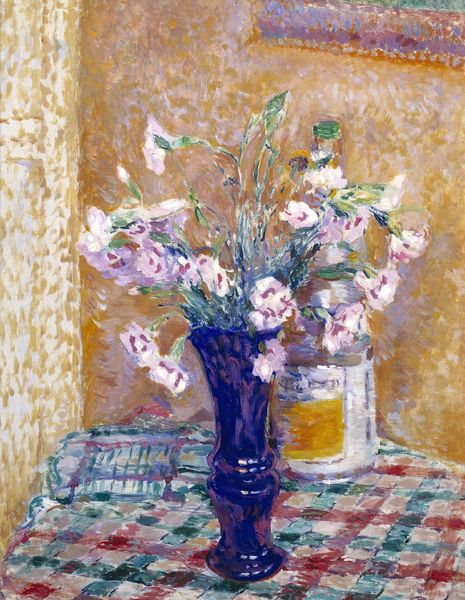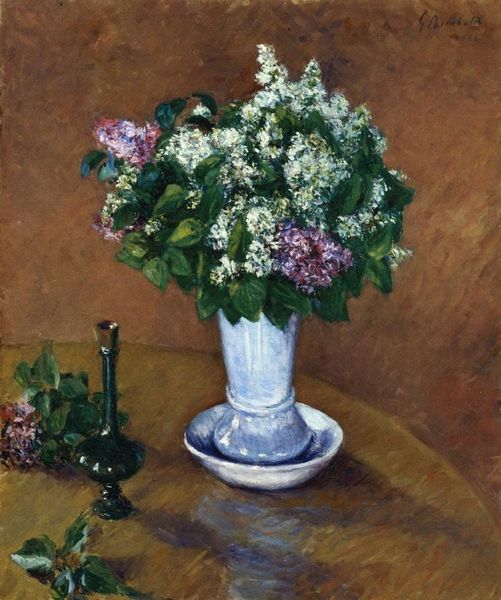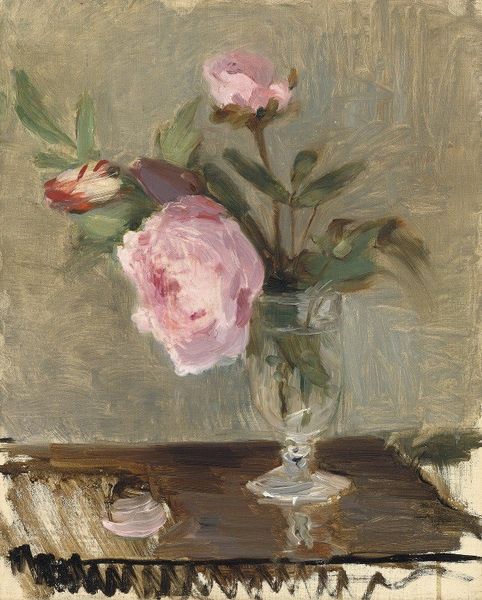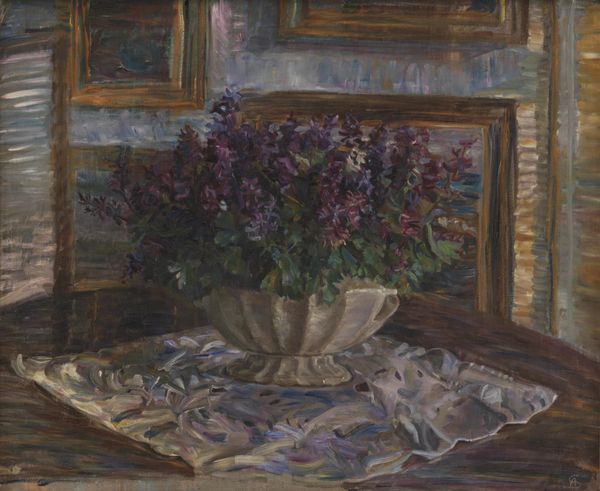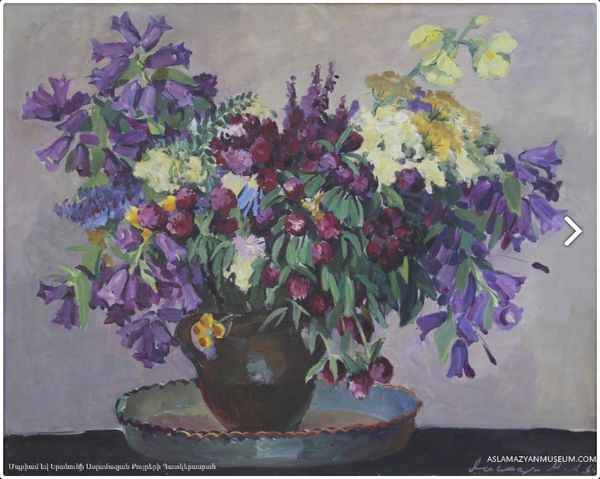
painting, oil-paint, impasto
#
still-life
#
gouache
#
painting
#
oil-paint
#
landscape
#
oil painting
#
impasto
Copyright: Vitold Byalynitsky-Birulya,Fair Use
Editor: So, this is "Violets," painted by Vitold Byalynitsky-Birulya in 1937. It appears to be oil on canvas, a still life. The colour palette is muted, very serene. It feels domestic and intimate to me. What symbols or hidden meanings can we find here, especially given the period it was created in? Curator: Indeed. Think about the violet itself. Beyond its visual charm, across cultures, violets are symbolic, deeply entwined with notions of modesty, faithfulness, and remembrance. Given that 1937 was a fraught time, heavily shadowed by political turmoil in Europe, what emotional counterpoint might the artist be suggesting by featuring these blooms so prominently? Could it be a subtle yearning for simpler times, a quiet defiance, or a pledge of hope amid uncertainty? Editor: That’s fascinating. So, the flowers aren't just flowers. Curator: Not at all. And consider the teacup. A commonplace, domestic object. What's the cultural meaning when the humble everyday is elevated and placed on display? Do you think it suggests resilience and finding beauty during bleak moments of intense hardship? Or is there more to this vessel and flora? Editor: I see your point. Maybe it is the beauty in simplicity when there's turmoil elsewhere. I initially just saw a pretty picture, but now I realize there could be complex layers to its meaning and intent. Thanks, I will remember that the next time I stand in front of artwork! Curator: Precisely! We discover that ordinary objects have power, depending on the when, where, and who involved in the artwork's genesis and journey. That is its ongoing impact.
Comments
No comments
Be the first to comment and join the conversation on the ultimate creative platform.
